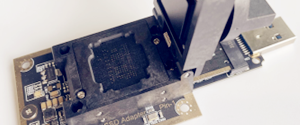Microdrives
The Microdrive was developed and launched in 1999 by IBM with a capacity of 170 MB.
Advantages of Microdrives
* Until 2006, Microdrives had higher capacity than CompactFlash cards.
* Microdrives allow more write cycles, making them suitable for use as swapspace in embedded applications.
* Microdrives might be better at handling power loss in the middle of writing. Flash storage always needs to move some old data around while writing, to ensure the flash’s finite write life is consumed equally; if there were a bug in the wear levelling algorithm it could cause data loss if the card were unplugged at the exact wrong time. Data on a magnetic hard drive is modified in place, and hard drive algorithms have many years more experience and testing over Flash.
DisAdvantages of Microdrives
* As of 2006, Microdrive’s capacity advantages were exceeded by CompactFlash cards(which are the same size and are often compatible with each other), and USB flash drives.
* Being mechanical devices they are more sensitive to physical shock and temperature changes than flash memory, though in practice they are very robust and manufacturers have added several features to the more recent models to improve reliability.
* A microdrive will generally not survive a 4 foot (1.2 metres) drop onto a hard surface where CF cards can be thrown off high-rise buildings and still function.
* Newer Microdrives have a mechanism to hold the heads off the platter while the device is not in use. Early IBM models do not have this – when one gently shakes such a drive one can hear the heads click from side to side.
* Microdrives are not as fast as the high-end CompactFlash cards; they generally operate at around 4-6 megabytes per second while high-end CF cards can operate at 45 megabytes per second. This may cause problems for photographers who shoot sequences of large images in rapid succession.
* They are not designed to operate at high altitudes (over 10,000 feet), but can be safely used on most commercial aircraft as cabins are generally pressurized.
* Outside of the professional photography market, Microdrives have more limited popularity by general consumers because many newer compact cameras lack CF/CF II slots due to the increasing popularity of portable flash media.
* Only high capacity models are manufactured, as it is not profitable to make low-capacity Microdrives. At the end of 2005 only capacities above 2 gigabytes are manufactured while 256mb and 512mb CompactFlash cards were still in production. Lower capacities are still readily available second hand on eBay but these are usually the same price as CF cards of the same size.
* Unlike flash memory, Microdrives require power even when no data is being transferred to them to keep the disc spinning. As a result many devices such as the iPod mini leave the drive switched off for most of the time while periodically starting it up to fetch data from it to fill the device’s buffer. Microdrives will switch off after idling for more than a few seconds to counter this problem however this means that more time is lost constantly spinning the drive up. This effect would be particularly problematic if an operating system is being run from the drive. However the drive can be forced to stay running if the host device is programmed to write random bits of data to it.
* Certain bus-powered CF card readers lack the power needed to run a Microdrive although they do take CF II cards, when using such a device it will usually be detected by the host but errors will occur once the user attempts to access the drive.
* Some “OEM Only” drives use the CompactFlash form factor but only provide a 5V IDE/ATA interface. These will not work in readers or devices which expect a 3.3V interface and full CompactFlash functionality,
* Microdrives also require some time to spin up, this is very low when compared to regular hard drives but not as fast as flash memory.
* Since Microdrives are often integrated in another device this can cause trouble if the drive breaks, it is usually the most fragile component of the device and if the device is out of warranty it can be very difficult to replace the drive
Devices with integrated microdrives
* Apple iPod mini – 4GB and 6GB Hitachi (CF mode disabled)
* Creative MuVo – 4GB Hitachi (CF mode disabled in later models)
* Creative ZEN Micro – 5GB/6GB Seagate
* Creative ZEN MicroPhoto – 4GB/8GB Seagate
* Dell Digital Jukebox 5GB Seagate ST1
* Hewlett-Packard Photosmart 475 – Unknown (1.5GB available to user)
* HTC Athena (Dopod U1000, HTC Advantage, T-Mobile Ameo) – 8GB Unknown (most suggest Hitachi)
* iriver H10 – 5GB and 6GB Seagate
* Nokia N91 – 4Gb Hitachi
* palmOne LifeDrive – 4GB Hitachi
* Rio Carbon – Seagate ST1 5GB
* Sharp Zaurus Sl-C3000
* Sharp Zaurus Sl-C3100
* Sharp Zaurus Sl-C3200
* Sony NW-A1000 – 6GB Hitachi
* TrekStor vibez – 8GB/12GB Cornice Dragon
* Olympus M:robe m100 mp3 player
* Navman iCN 650 – 2GB Hitachi
Sometimes when a device with an integrated Microdrive stops working the device is taken apart and stripped of its Microdrive, which is then sold on. Unfortunately, Microdrives taken from such devices may not work in digital cameras. These drives must be accessed using ATA mode, which is not supported in all devices. Such drives, therefore, do not sell for nearly as much as CF-enabled Microdrives.
Data recovery Salon welcomes your comments and share with us your ideas, suggestions and experience. Data recovery salon is dedicated in sharing the most useful data recovery information with our users and only if you are good at data recovery or related knowledge, please kindly drop us an email and we will publish your article here. We need to make data recovery Salon to be the most professional and free data recovery E-book online.
World’s Top Data Recovery Hardware Tools
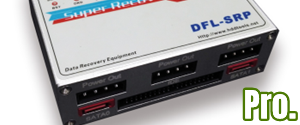
Easy to use at good price
Recover SATA, IDE, External HDDs, NVME SSDs, etc Order Now here
POTABLE DEVICE & NVME SSD RECOVERY TOOL
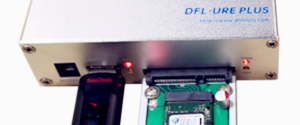
Recover USB Device and NVME SSDs at high speed! Read Details here.
DFL-PCIE DATA RECOVERY RECHARGE
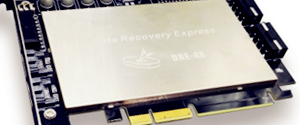
Best data recovery hardware tool to start a data recovery business, read details here
RECOVER SCRATCHED HDDS

Recover lost data from scratched hard drives, read details here.
SURFACE PRO. RECOVERY
BEST HEAD REPLACEMENT TOOLS
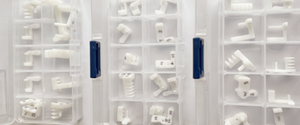
The most cost-effective head replacement tools for Seagate, WD, Samsung, Hitachi, Toshiba, Fujitsu

